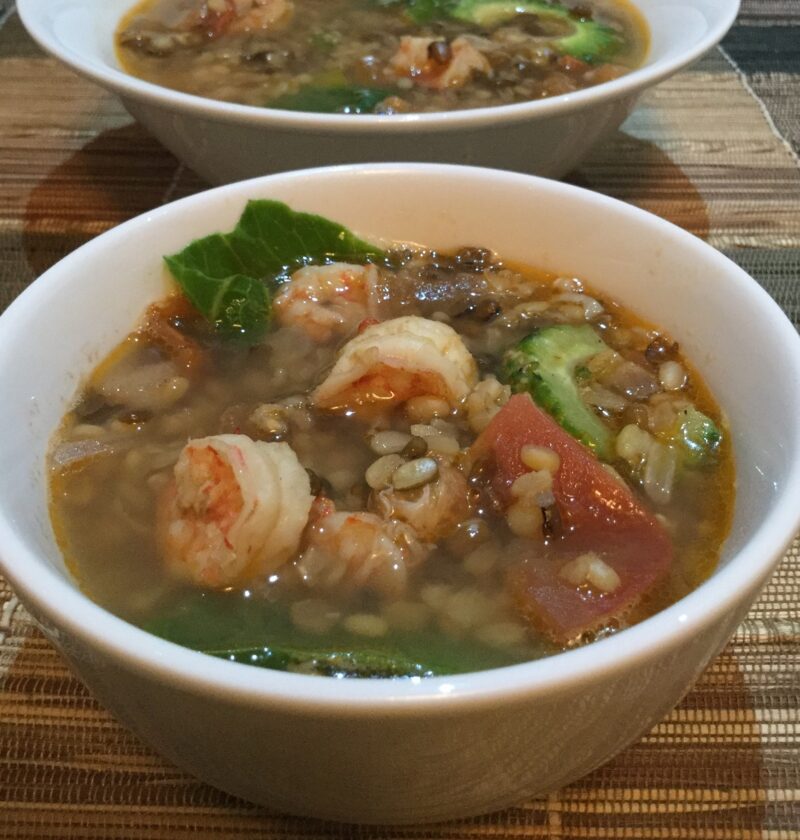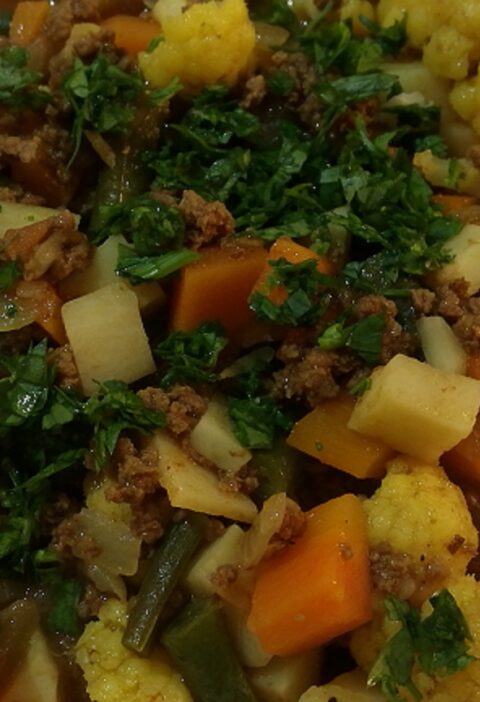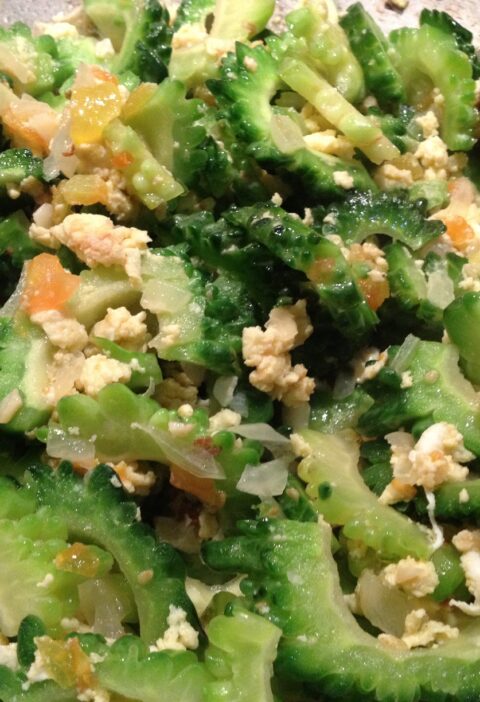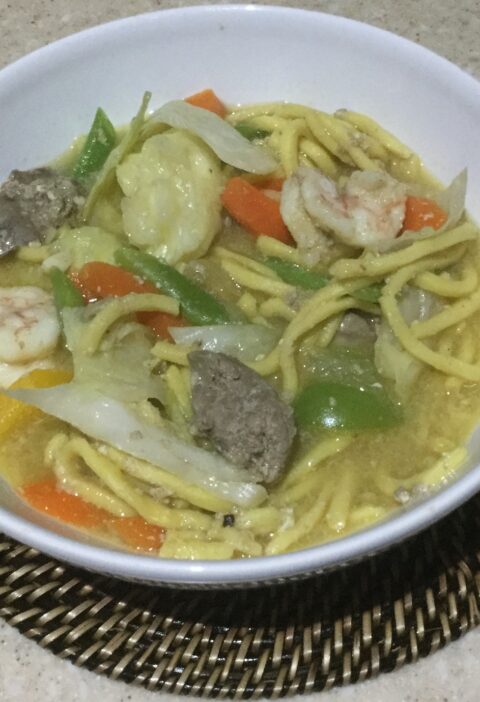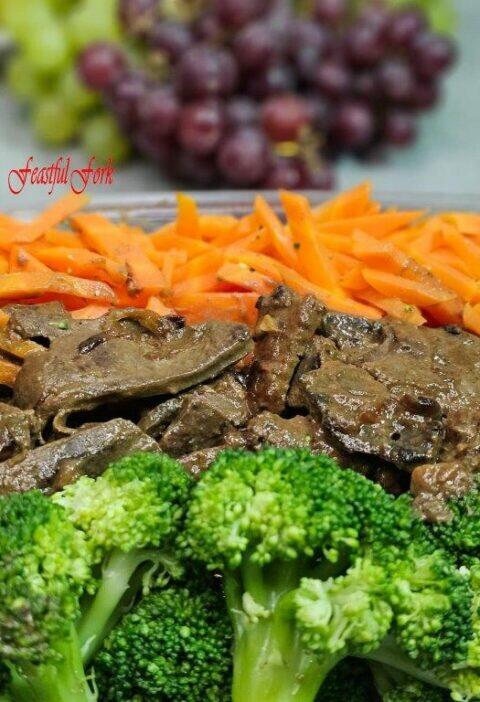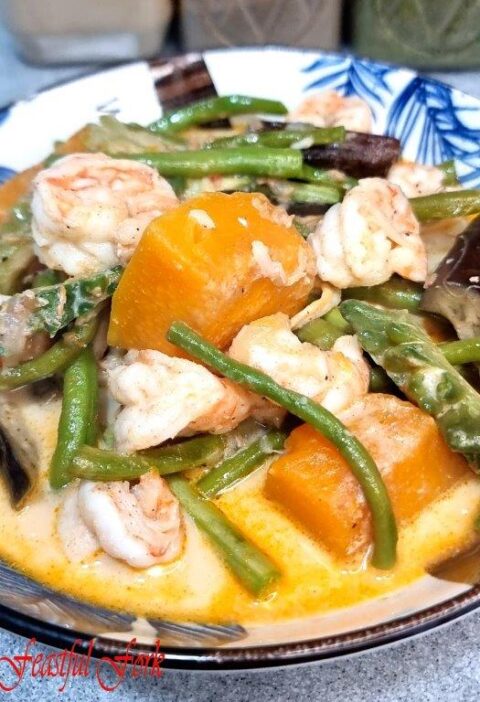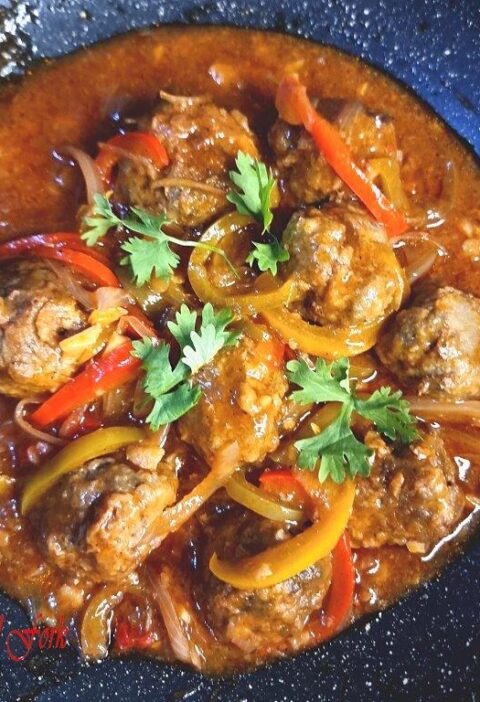What is ginisang munggo?
Ginisang munggo is literally a delicious mung bean stew. Ginisang Munggo (also called monggo) or sauteed green mung beans is a traditional recipe and a popular legume in most Filipino households. Munggo (mung beans) are abundant and inexpensive in most parts of the country and stewing is one easy way to cook it. Most Filipinos eat it as a viand, i.e., eating it with steamed white rice, and it is also partnered with fried fish, mostly. Ginisang munggo can also be good as an appetizer or eaten as it is. If you are looking for delicious vegetable dishes, ginisang munggo is definitely one of them.
Is ginisang munggo healthy?
Ginisang munggo recipe is healthy – from its main ingredient to its protein and vegetable partners, especially bitter melon (ampalaya) or bitter melon leaves. Originally, though, the leaves are used, but if they are not available, slices of bitter gourd become a good replacement. If you have not tried bitter gourd leaves, allow me to tell you that they are more bitter than the vegetable itself. The leaves give the dish the aroma, and for those who cannot take its taste, pushing these greens aside is an acceptable norm.
Munggo itself is healthy; it provides energy, is a good source of protein, and belongs to the pulses category, which makes it an excellent source of amino acids like lysine, methionine, cysteine, etc. Those are essential for growth in children. As simple as it is, monggo is a good source of nutrition.
Ginisang munggo is the ultimate comfort food for me. The two best things about this recipe is that it calls for affordable ingredients that have a lot of health benefits.
Ingredients for ginisang munggo
[wprm-recipe-jump][wprm-recipe-jump id=”2931″]For a cup of raw mung beans which can result in a pot when pre-boiled to be sauteed (ginisa), this recipe will include cloves of garlic, medium onion, and ripe tomatoes (the basic sauteeing ingredients). Then fresh or dried shrimp (which is also called “hibi” in the Philippines), fish sauce, salt, black pepper, and about a cup or two of water depending on how thick you prefer your ginisang munggo to be. A cup of raw munggo can feed an entire family of 4-5.
How to cook ginisang munggo
You can substitute shrimp with canned sardines, (leftover) fried fish, or shredded smoked fish (tinapa flakes); some use pork (which we do not have in my mothers‘ – aka my birth mom and my mom-in-law – kitchens). I had tried it with minced chicken and it turned out well, though slightly different from its counterpart which has shrimp.
My own kitchen is rich with comments, suggestions, and requests from my husband and kids. That results in a lot of revisions and several versions from one single recipe. This photo here is the result of many experiments: removing the ampalaya and adding different vegetables. the whole thing is in itself a staple food.
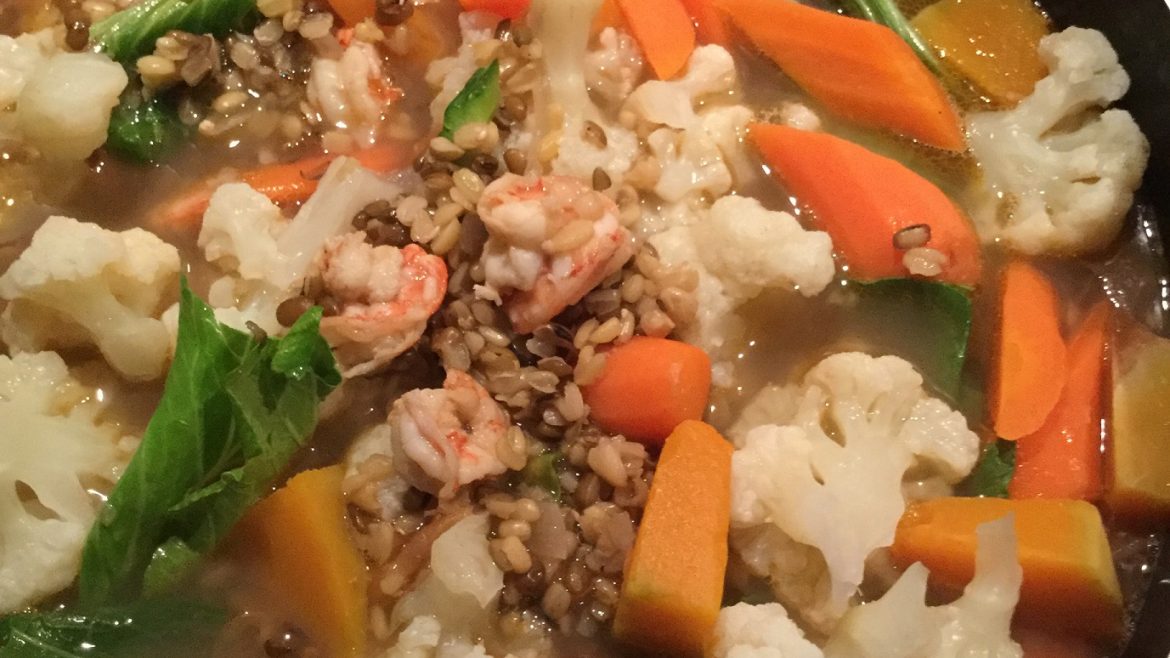
And to share with you the rebirth (variation) of ginisang munggo because of my complaining hubby and kiddoes, I cut up available veggies from the refrigerator and/or pantry (carrots, zucchini, green beans, sweet potatoes, pumpkin) and add them after I put the pre-boiled mung beans with the sauteed vegetables in the cooking pot. Stir them once, and leave them to simmer for 2-3 minutes or until the vegetables are done.
Storing leftover ginisang munggo
Leftover monggo can be stored in a tight lid contained in the fridge for a couple of days, although as with many other dishes, it is best eaten on the same day of cooking. Then this can be reheated in the microwave oven for a few minutes or on the stove over medium heat until mung beans are thoroughly heated. Season with fish sauce sparingly, or just a bit of additional salt for an added touch.
Leftover ginisang munggo can be converted into a delicious mung bean soup! Additional water and probably a touch of fish sauce are all that is required. No other additional ingredients.
Cooking tips
- Soaking the monggo beans in water for a couple of hours will help in softening them at the boiling stage.
- A cup of mung beans can result in a pot of delicious cooked mung beans.
- Keep the bean shells intact. However, if you do not like mung bean shells, munggo without them might also be available in your local market.
- Replace ampalaya leaves with fresh spinach or malunggay leaves (moringa leaves). Both are as healthy. Better yet, replace ampalaya leaves with ampalaya itself. It is where ginisang munggo with ampalaya recipe came about in many kitchens. Cooking time for amplaya after adding them to the pot is between 3-7 minutes depending on your preference. I like them almost fresh, so no more than 2 minutes for me. Another good replacement for ampalaya leaves is spinach. All options retain this dish in the category of a simple dish.
- Add a tablespoon of shrimp paste with sauteed ingredients during the first step of the cooking process for a varied rendition.
- Add chicken or beef cube to replace fish sauce, if you wish.
- This dish is usually served in a deep bowl. I love tablespoons of fish sauce on the side for extra flavor.
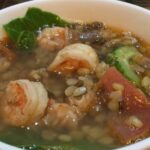
Ginisang Munggo (Stewed Mung Beans)
- Prep Time: 10 minutes
- Cook Time: 20 minutes
- Total Time: 30 minutes
- Yield: 4 1x
Description
Mung beans cooked in a very healthy way
Ingredients
- 2 cups pre-boiled munggo
- 3 tbsp cooking oil
- 3 cloves garlic (minced)
- 1 medium-sized onion (diced finely)
- 1 small tomato (diced)
- ¼ k (shrimps, peeled and deveined)
- 1–2 cups water
- 4 tbsp patis
- Salt and pepper to taste
- Slices of half an ampalaya (bitter melon)
Instructions
- Sautee garlic, onion and tomato — in that order, with a distance of about half a minute each.
- Add shrimps and stir till they are pinkish in color.
- Add munggo, water, salt, pepper and patis and simmer. Add ampalaya slices then turn the heat off immediately.
Notes
You can use any variety of lentils instead of munggo.

